Now and then, travel writers in Europe stumble across a unique place that has somehow remained undiscovered by the teeming tourist masses. So it was with my random visit to the small, perfectly preserved medieval town of Seligenstadt. Lying only 25 kilometers southeast of Frankfurt am Main, this intriguing town—with a population of only 20,000—packs more sights into a small area than you might imagine.
Last summer, the German National Tourism Office suggested that I stop off in Seligenstadt as part of my 12-day whistle stop tour of SW Germany. What, I wondered, could such a small town that I’d never heard of have to offer? Plenty, as it turned out, so I’m really glad they slipped it into my schedule. The tourism office provided yet another fantastic guide, Hedi Schmitt, for my tour of the little gem that is Seligenstadt. As a local resident, Hedi was able to provide an insider’s view of the town.
The Glaab Brewery
Our tour started at the Glaab Brewery (Glaabsbraurei). You can’t miss it. It’s housed in an immaculate, white, two-story building with a red-tiled roof. A narrow lane cuts right through its lower level and leads into town.
A life-sized mural of brewer wearing a leather apron and holding a spigot in hand is painted high up on the side of the brewery. He’s carrying a beer barrel on his shoulder, leaving no doubt about the building’s function.
Founded in 1744 (one of their beers is named “1744” to honor this), the Glaab Brewery makes an interesting tour “Because its beers are very popular in this region”, explains Hedi. It’s a private, family-owned brewery, one of a small few remaining in Hesse, and has been run by nine consecutive generations of the Glaab family. “The brewery is also famous for its dark brown Vitamalz Malzbier, a non-alcoholic malt drink”, Hedi adds. “A lot of young Germans have been brought up with this daily health drink, much as kids in America have orange juice with breakfast every morning”.
Starting our tour at the Brewery’s Sudhaus (South House) we come to several enormous brightly polished copper Mash Tun Fermentation Tanks. Many of these old tanks are no longer in use and now simply provide a backdrop for the brewery tours.
“The Glaab family is very aware of their brewing heritage in this town, so they preserve their history and artifacts well, like these copper tanks”, says Hedi. This is the cleaning day so there’s not much brewing action going on. I’m told that the brewery employs 37 people. After looking at samples of hops and malt, we continue our tour of the brewery. It’s a rabbit warren maze of large rooms and corridors and stairways. We pass modern stainless steel holding tanks and open fermentation tanks, the hydrometers, and the storage area.
The Glaabsbraurei would be regarded as a mid-size brewery in the U.S.A, definitely larger than the microbreweries sprinkled around Seattle, where I hail from. But the Glaabsbrau—with a history that spans three centuries—with its ancient buildings, and artifacts like old wooden brewing barrels lying around—exudes a lot more atmosphere. Glaab brewery uses its own spring water and adheres closely to Germany’s “Beer Purity Law” of 1516.
The brewery uses lengthy cool cellar fermentation and practices just-in-time delivery of its beer, to ensure its freshness and trademark “zing” taste. Deep down in the cellar we stop for a sample of Zwickl (spigot) beer, from a tap that runs directly from the bottom of the tank. We sample a cloudy Hefeweizen, one of Glaabsbrau’s flagship beers—and it’s excellent: Just the right balance of wheat and yeast for my palate. This is going to be a good brew when it’s finished.
Our final stop is the tasting room. We see a display of Glaabsbrau’s twelve different beers and ales, plus an assortment of ceremonial beer steins and medals the brewery has won in competitions. Glaab beer is bottled in special brown bottles with swing caps, called Buegel bottles. I finally get to sample the famous Vitamalz and really like it—sort of a zesty, distant German relation to American Sarsparilla, but with a thick malty taste. Some of Glaab’s other renowned brews include Pilsener, Radler, and Doppel-Bock.
The Market Square: Marktplatz
After meeting Robert Glaab, the manager of the brewery, it’s time to explore the Old Town. A short walk later we round a corner and I come to a dead stop. I’m looking at the first of Seligenstadt’s pleasant surprises. It’s a sizeable town square—the Marktplatz—paved with reddish-brown brick cobblestones. But this isn’t your basic European town square, no sir.
Measuring perhaps 100 meters by 80 meters, the square is completely enclosed by dozens of perfectly restored and preserved half-timbered medieval and renaissance era houses. With their gleaming white facades crisscrossed by large red painted timbers in the Fachwerkhauser style, they look like they were only built yesterday. This astonishing scene is like being taken back in time a few hundred years.
These two- and three-story houses lining the Marktplatz have attics and garrets tucked away under sharply sloping A-frame roofs—it all looks frightfully Bavarian. (Not surprising I suppose, because Bavaria is the neighboring state.)
Many of the wooden beams, inset into the clay and straw walls, are arranged in intricate symmetrical patterns: crosses, V shapes, A shapes, and diamonds and squares. Some beams have brightly decorated patterns carved into them.
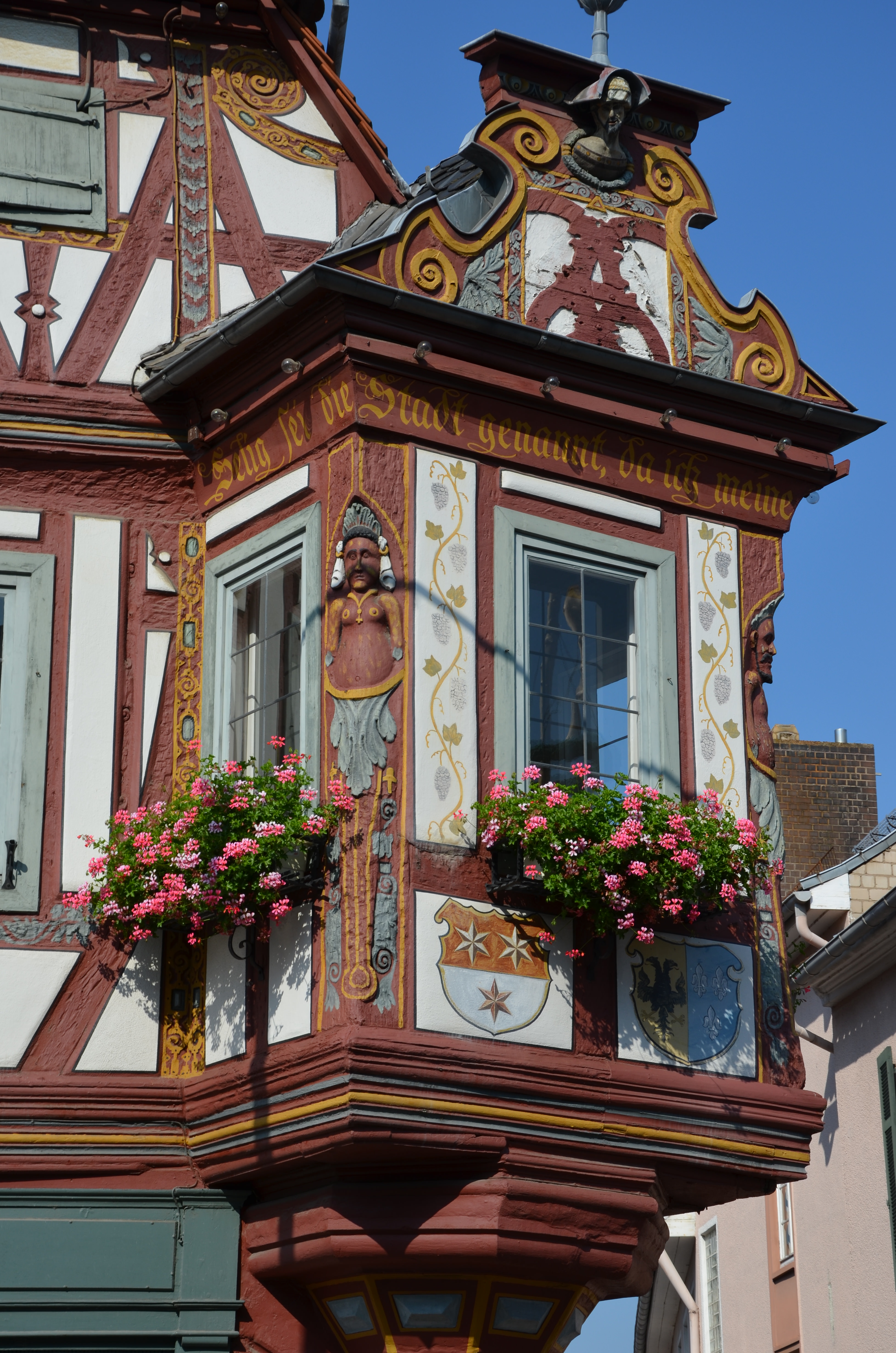
the small square turret on the second floor corner is decorated with two crests and elaborate acorn and leaf friezes. two faces and torsos are carved into its corners
If it weren’t for the occasional sleek Mercedes purring around the perimeter road and a few blue shade umbrellas pitched over round café tables in one corner, I’d think I was caught in a 17th century time warp. Looking across the square, in my mind’s eye, it’s easy to imagine merchants, artisans, and fishermen, dressed in rough breeches and lederhosen, selling fruit, vegetables, and meat and goods from their carts, back in the day. They’d be yelling in Old German, announcing their wares to the townspeople crossing the square, walking past the towering maypole and water fountain.
The Einhardhaus
Hedi tells me that many of these houses date from the 1500s and 1600s, and 177(!) of them are registered national monuments. We walk around the square while Hedi points out a few of the most historically important buildings.
The Einhardhaus (1596) is the most spectacular house, with its richly decorated second and third level facades. The bottom level is a shop. The small square turret on the second floor corner is decorated with two crests and elaborate acorn and leaf friezes. Two faces and torsos are carved into its corners, framed by large planter boxes overflowing with red and pink flowers.
The Romanisches Haus (Romanesque House)
This ancient stone house, built by Frederick Barbarossa in 1187, is the oldest building on the Marktplatz, and boasts two brick archways. Barbarossa occasionally kept court here, making it an important cultural landmark.
While we’re walking around the square Hedi gives me a crash course on the town’s history. Its’ origins date from 100 AD, when 500 Roman soldiers were stationed in a fortress here. Then, in 260 AD, fierce Germanic tribes destroyed the fort—probably bringing a sticky end to the hapless Roman soldiers.
Fast forward to medieval times—the Carolingian period—when Charlemagne deeded the town to one of his most dedicated scholars and advisors, Einhard, as a reward. After all, Einhard made good by writing Charlemagne’s biography, called Vita Karoli Magni (Life of Charles the Great), regarded as one of the most precious literary bequests of the middle ages. But more about Einhard’s influence on Seligenstadt later . . .
The Rathaus
We move on to the two-story Town Hall, or Rathaus, with a rectangular bell tower above it. Concerts and recitals are still held here. With a modest white façade, inset with five arched windows on the second level, the Rathaus is not a spectacular building, but very important to the town’s history.
A Baker’s Diversion
I’m lured into the local bakery by the delicious smell of pastries, pies and cakes wafting from its doorway. The bakery is right on the square. Its displays of breads, donuts, pies, and cakes are seriously enticing.
Neatly arranged rows of pastries filled with raisins, butter, and strudel tempt me; and other savory cheese and herb treats just beg to be sampled. The Germans know how to do baked goods right! I try a couple of the soft doughy pastries and they’re as good as they look. Hedi has to practically drag me out because we’ve still got places to go and things to see.
The Einhard Basilika
Just across town, the tall twin spires of the Einhard Basilika pierce the sky. Behind them, the shorter, more rounded octagonal “Angel’s Tower” rises up from the basilica’s sloping black tile roof. Built in 830 AD, local lore has it that the basilika was built from the stones of the ancient Roman citadel situated here. The builder was, of course, our old friend Einhard, whose remains are interred inside the basilica. Einhard, it turns out, was quite a lad—local lore has it that he eloped with Charlemagne’s daughter, Emma. The emperor eventually came across her when she served him pancakes in an inn.
The basilika is the town’s main landmark. Built with orange/red brick walls, it was Seligenstadt’s religious epicenter. In its day, numerous precious relics were brought from Rome and displayed here, which attracted pilgrims from all over the empire. Around this time the village acquired the name “Saligunstat”, meaning “Blessed one’s town”. And it’s still an apt name today.
The basilika’s interior, although plain, still gives an idea of the wealth and glory of the monastery and town in its heyday. The impressive nave, with its straight-coffered ceiling, has been restored to its original Carolingian architecture complete with partially restored ancient frescos.
The Cloister Gardens
Behind the basilika we enter an expansive 7.5-acre garden. It’s surrounded by a long stone wall. Hedi tells me, “The Benedictine monks used plant and herbal medicines extensively and also grew their own produce. The garden still grows fruit trees, and vegetables and herbs that, in their day, were used in the monks’ kitchen”.
I see a long rectangular purple flowering lavender garden surrounded by a manicured grass lawn. Small signs indicate the dozens of herbs and plants that were grown here extensively in the 17th and 18th centuries. Today, to cater for tourists, much of this colorful garden has also been planted with decorative flowers and roses.
The Monastery & Benedictine Abbey
Old buildings, their roofs sagging slightly, provide a charming backdrop to the gardens. One long and ornate white painted building catches my eye. Long thin beards of green ivy grow up its façade, and its red window trim and red cornerstones are very distinctive. This, Hedi tells me, is the Benedictine abbey, another of Seligenstadt’s tourist treasures.
Our friend and scholar Einhard clearly kept himself busy, because in addition to the basilica, he had this abbey constructed in 830 AD. Then, in the Baroque period, most of the larger and more impressive monastery buildings were added. Between the basilica and the abbey, and its designation as a pilgrimage “destination”, daily life in the town was dominated by the order for centuries until 1803, when the monastery was abandoned due to the secularization of Germany. Inside the abbey is a small museum of religious artifacts.
Emerging from the monastery grounds we soon reach a river, 100 meters wide. This is the River Main, and it’s still crossed by a small car and passenger ferry. Hedi and I retrace our steps through the square, heading to the train station. I have to move on to my next destination, but had I known more about Seligenstadt’s charm and intriguing attractions, I would have elected to stay the night here.
Information on historical tours is available in the Tourist Information Office on the Market Square. Individual and group tours can be booked here. Seligenstadt Tours
Written by and photos (unless otherwise noted) by Roy Stevenson for EuropeUpClose.com

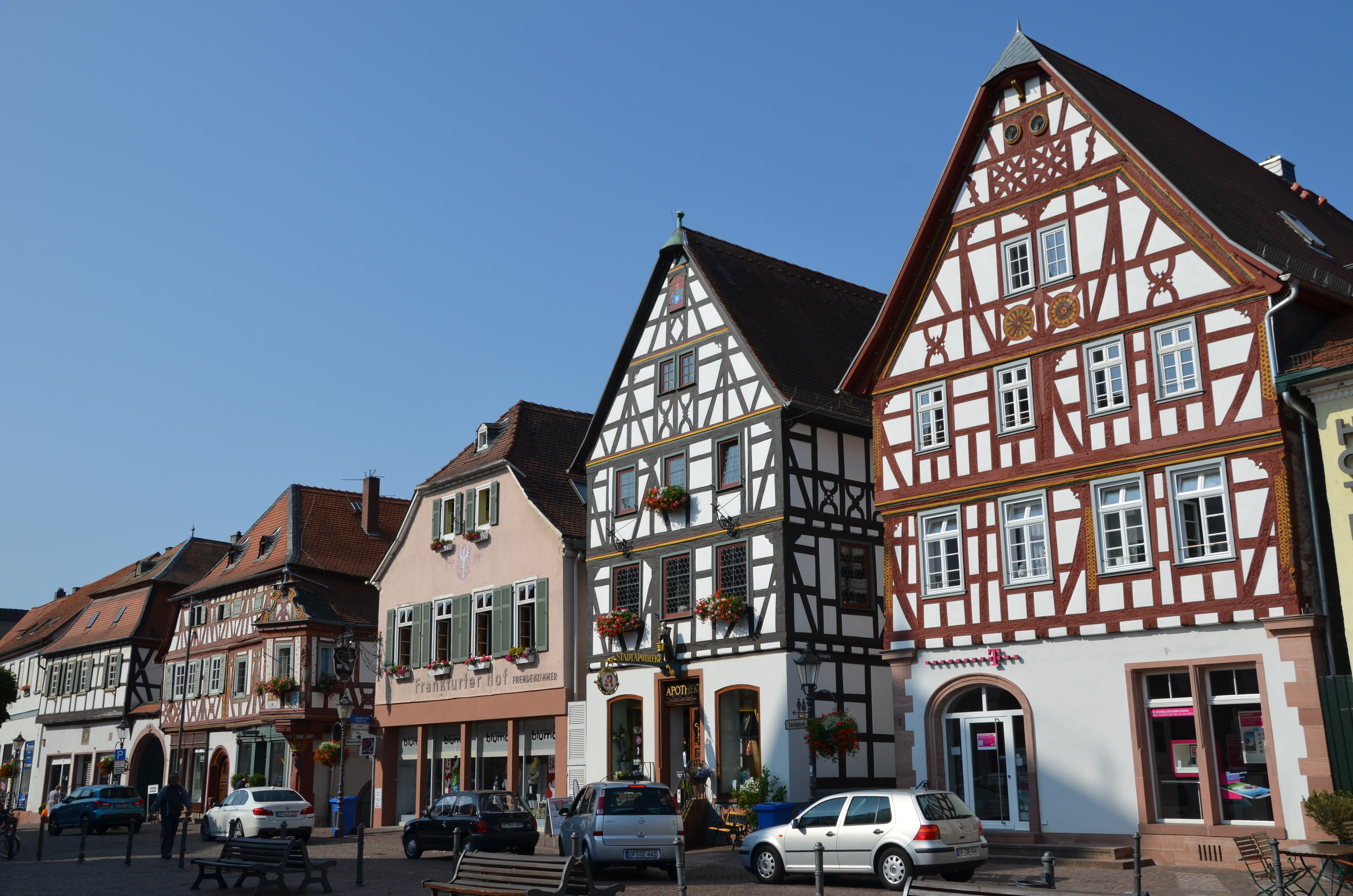
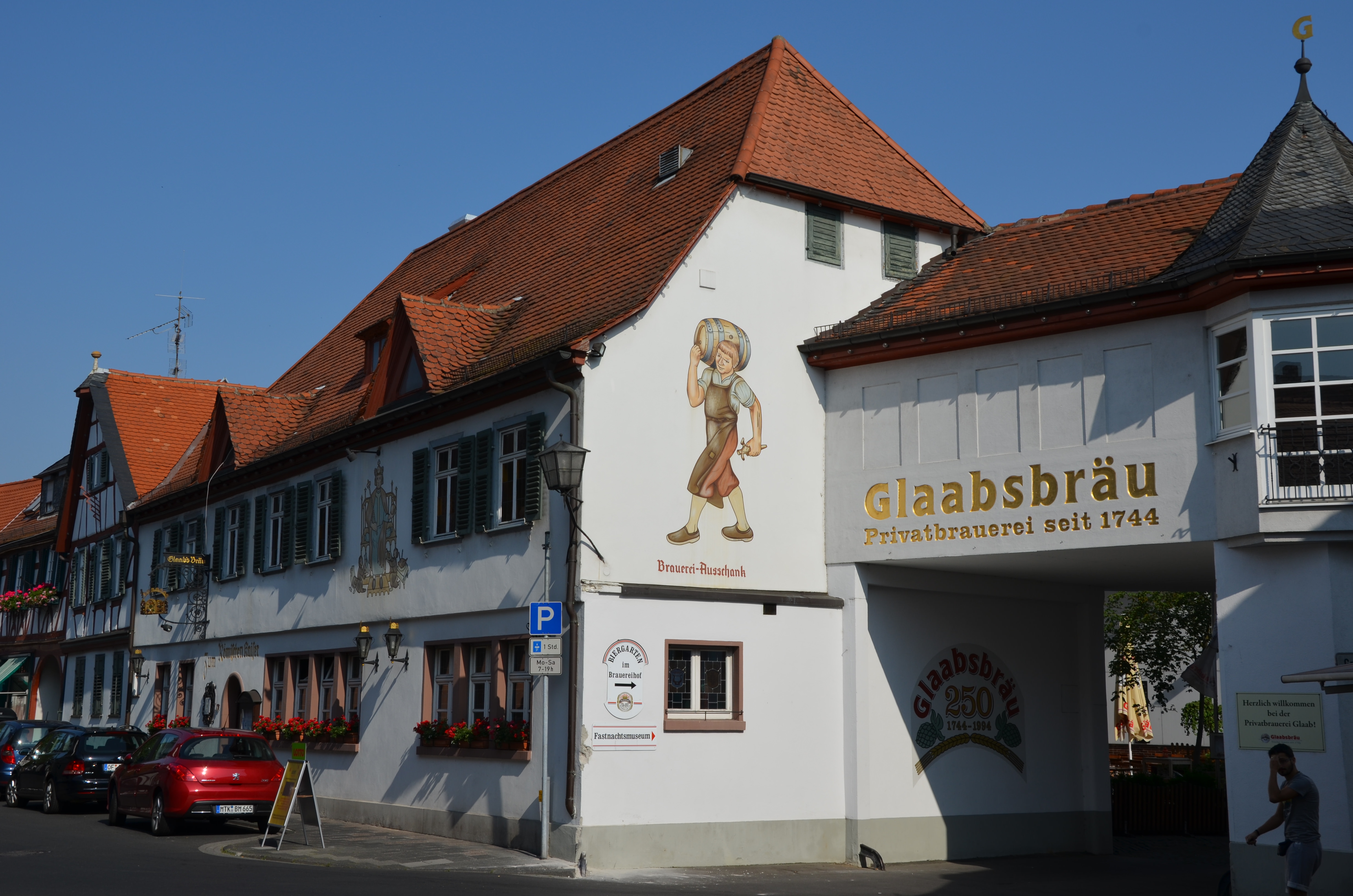

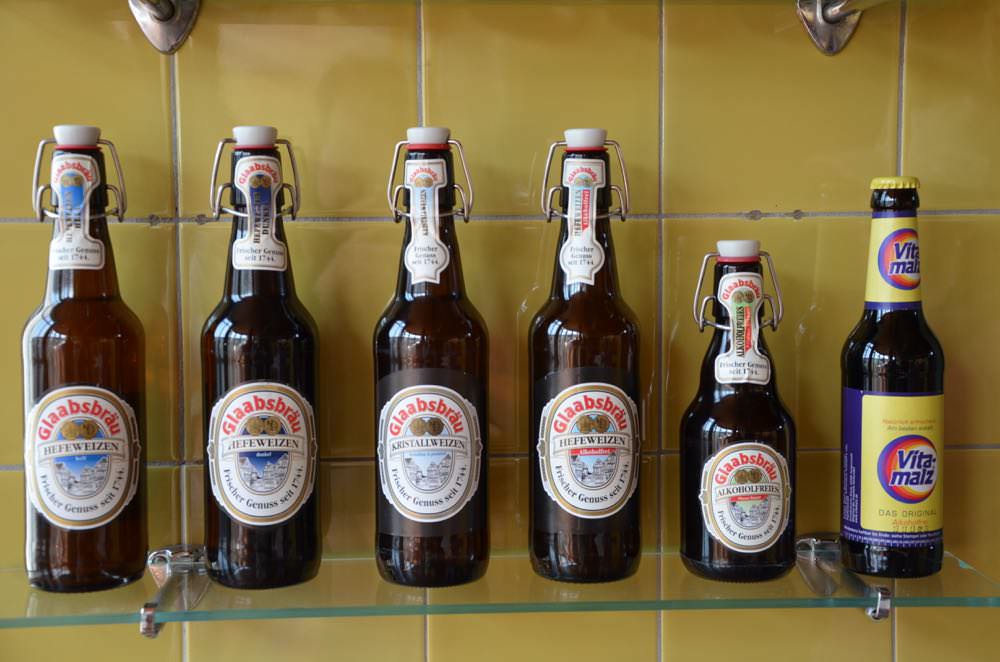

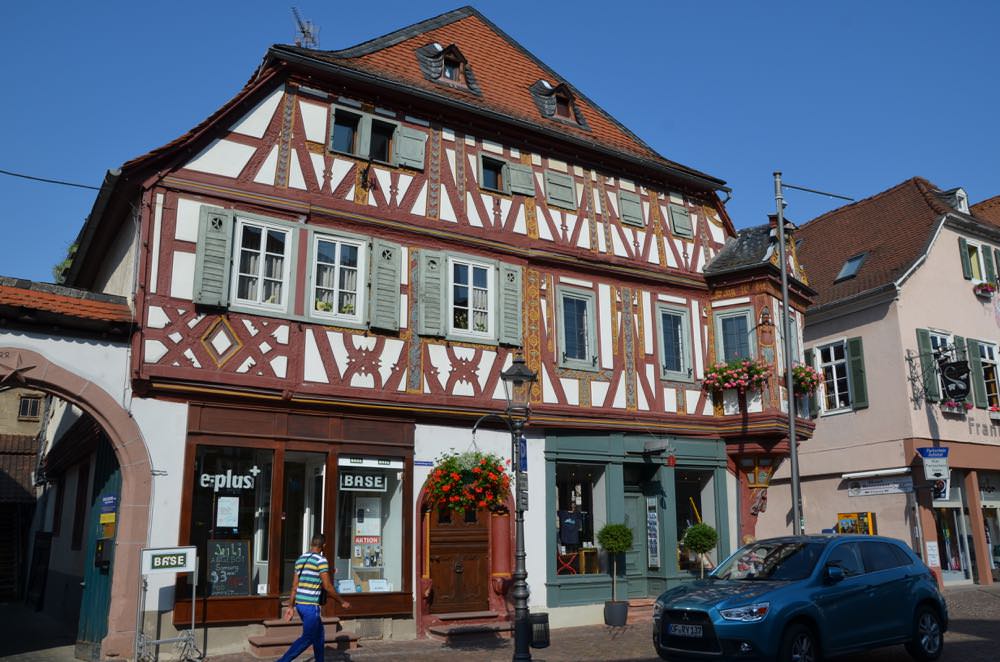

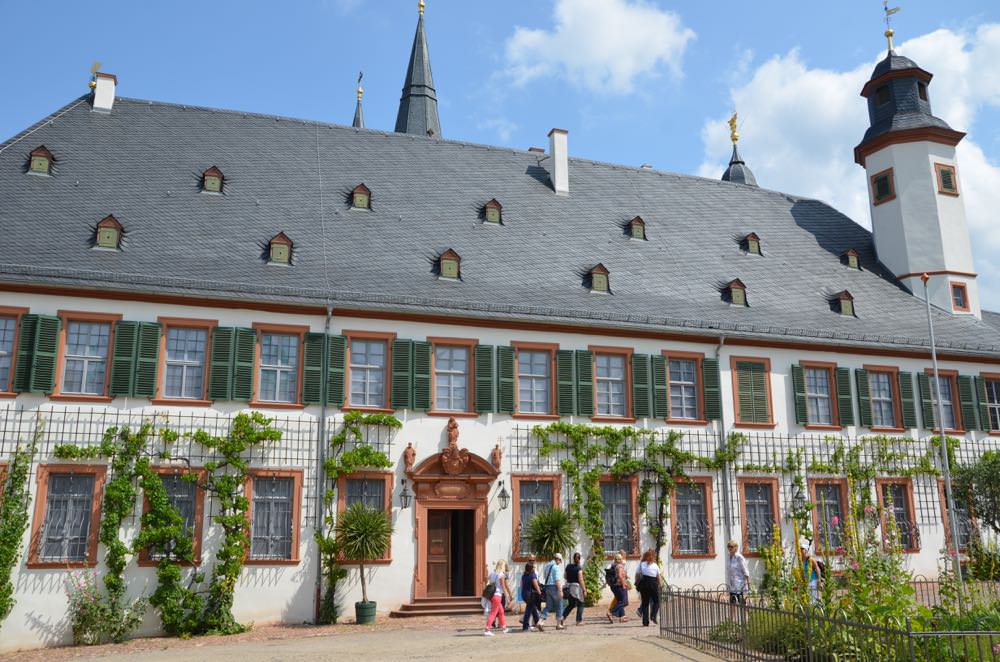
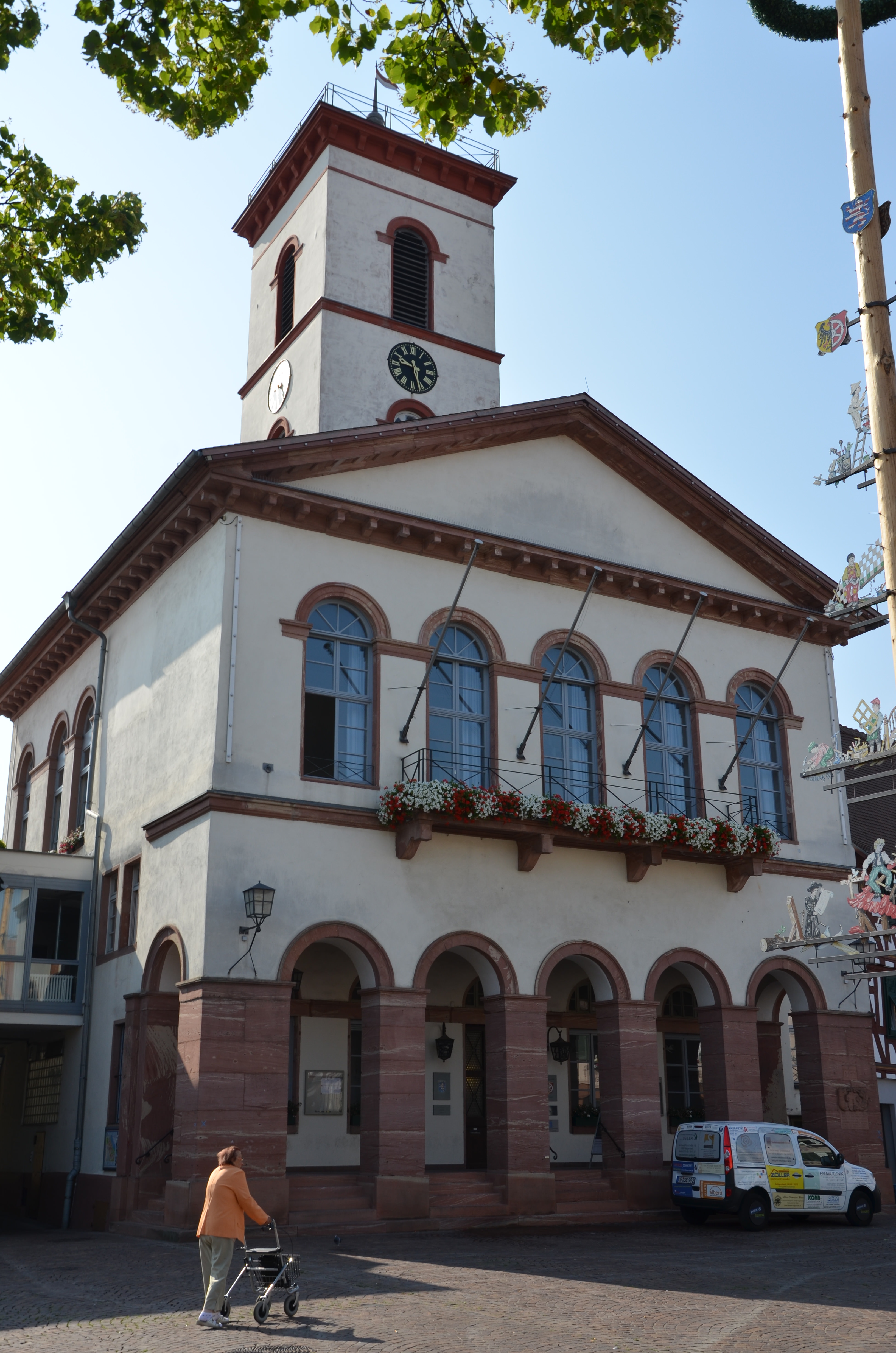
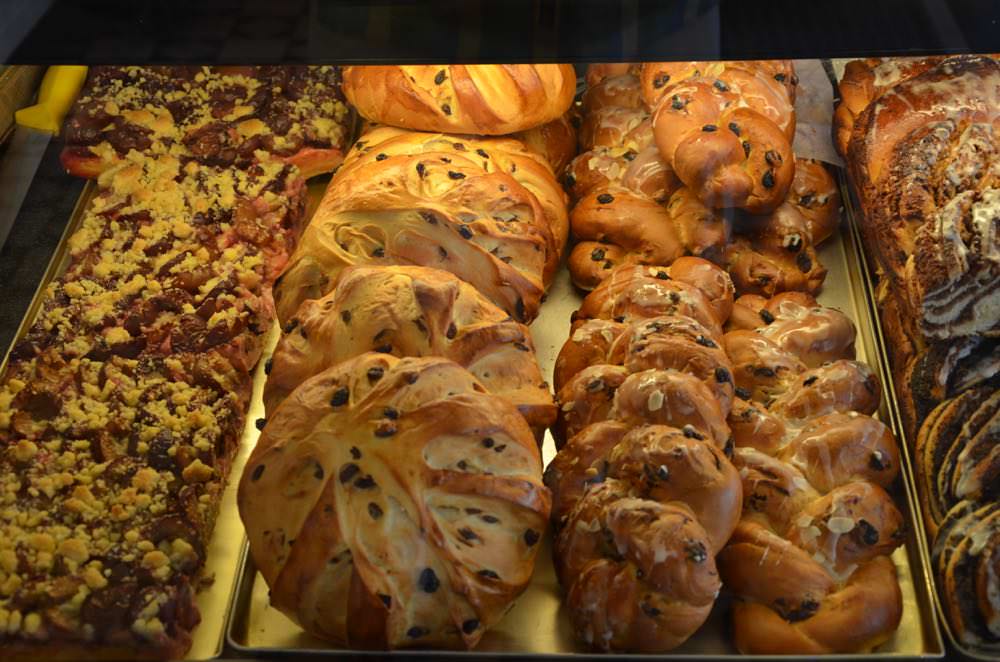
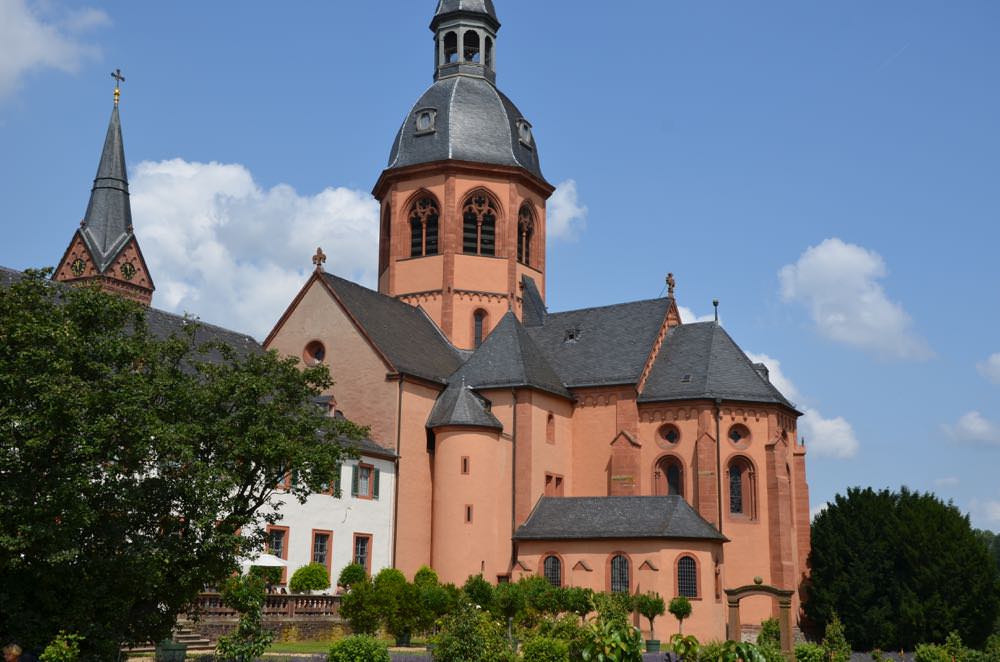
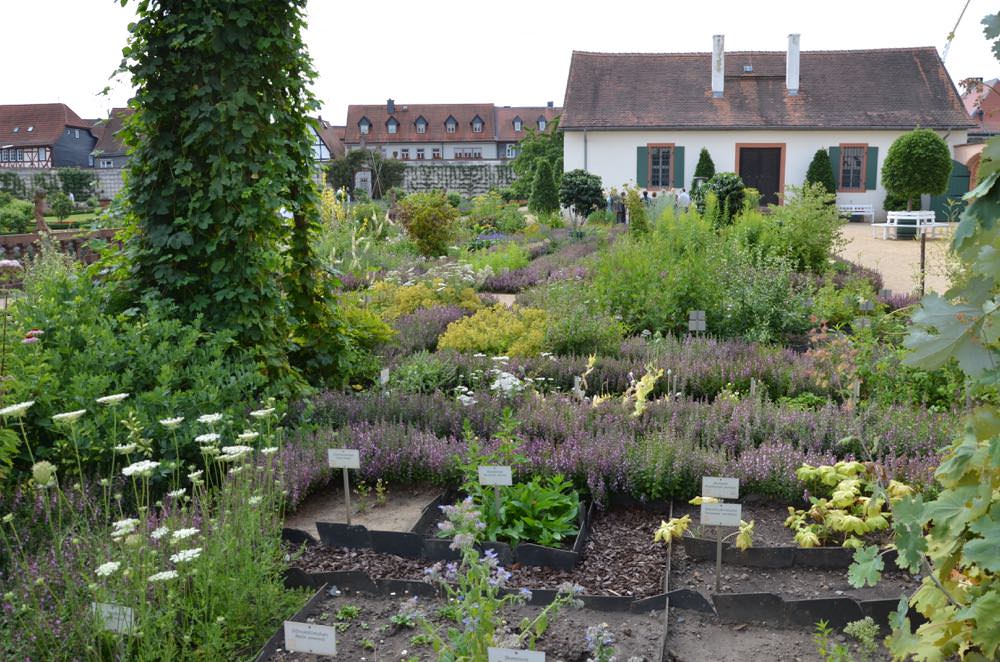
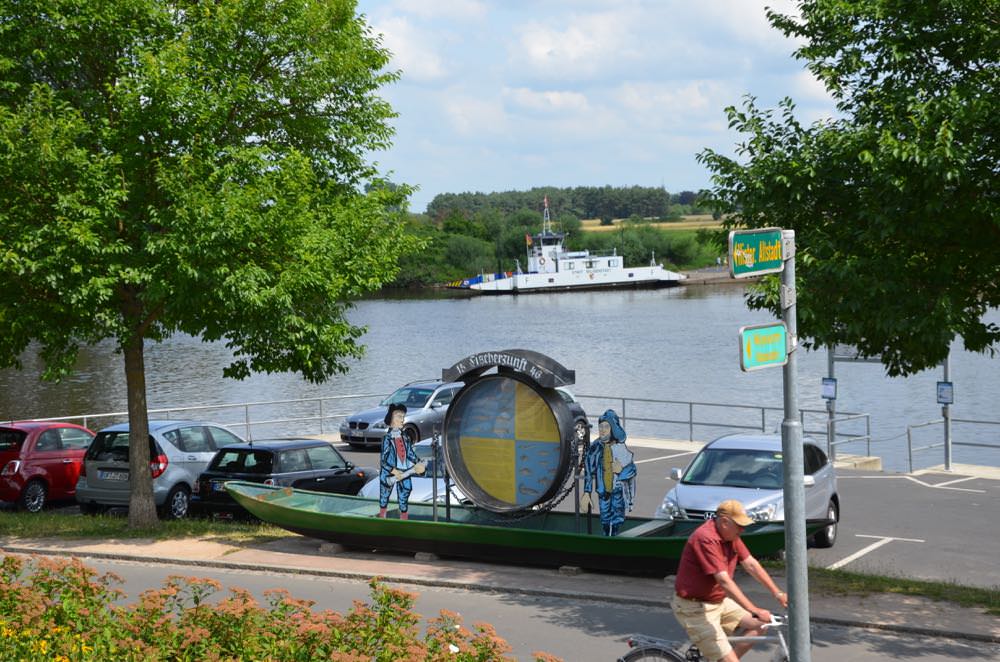
Roy Stevenson
Tuesday 27th of January 2015
Thank you Deborah, for your nice comments about my Seligenstadt travel article. It is a special town, and hopefully we will see more visitors coming to see its extraordinary sights. -- Roy Stevenson
Deborah Hof-Klatt
Tuesday 27th of January 2015
Thank you so much for this wonderful, detailed report about your visit in my home town. It was very interesting to read about a travelling guest who experienced our "little gem" at the river Main for the first time. I hope you'll return for another visit one day. :)
Scott F.
Friday 23rd of January 2015
Wow, this was a gem. I'd like to get your itinerary of that 12 day tour. I've been thinking of one too but I have a hard time choosing. We did get a day in Frankfurt last year thanks to our French friends at Air France going on strike. But we made tge best of it and had fun.